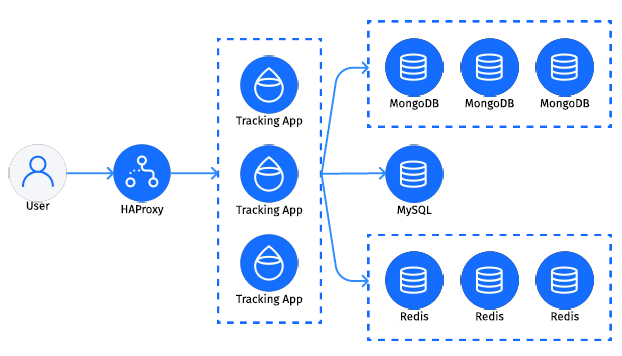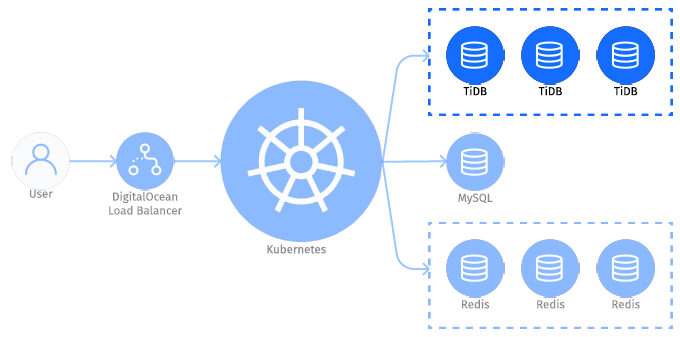Elevate modern apps with TiDB.
In the fast-paced world of eCommerce, data is more than just an asset — it’s the foundation for every strategic decision. Since its founding in 2013, Omniconvert has established itself as a leading data-driven experimentation platform, helping online retailers and brands make sense of their customer behavior and improve their conversion rates.
With a mission to empower businesses through experimentation and customer-centricity, Omniconvert offers three robust core products:
- Omniconvert Explore: A dynamic tool for A/B testing and surveying that uncovers performance-boosting insights.
- Omniconvert Reveal: A powerful analytics platform that provides deep visibility into customer behavior and lifetime value.
- Omniconvert Pulse: An AI-driven CX monitoring platform that transforms raw customer feedback into meaningful, actionable data.
But as Omniconvert grew and evolved, so did the complexity of its data infrastructure, which posed serious challenges.
The Challenge: Performance Bottlenecks and Costly Scalability
As Omniconvert scaled up its operations, its reliance on MongoDB started to show strain. What was once a reliable system began to buckle under the weight of rapidly expanding datasets and user demands.

Two critical pain points emerged:
- Slow Aggregation for Reporting Queries: Omniconvert’s platform allows users to apply custom filters and date ranges to experiments and surveys. As datasets ballooned, these reporting queries began to lag, taking longer and longer to complete — often at the cost of user experience and decision-making speed.
- Expensive and Inefficient Scalability: Horizontal scaling of MongoDB was labor-intensive and costly. To handle occasional spikes in traffic, Omniconvert had to overprovision their infrastructure, keeping a consistently oversized cluster online, just in case.
These inefficiencies weren’t just technical, though, as they were beginning to hold back the company’s ability to innovate and grow.
The Search for a Better Solution
Omniconvert’s engineering team, led by CTO Sorin Dumitrescu, knew it was time for a change. They began looking for a database solution that would offer:
- High availability
- Strong support for real-time reporting
- Horizontal scalability
- Ease of maintenance without requiring a dedicated DevOps team
- Support for zero-downtime upgrades and easy backup management
Most importantly, the new system had to strike a delicate balance: Enabling high-throughput transactional (OLTP) workloads, while also delivering exceptional performance on large-scale analytical (OLAP) queries. It also had to be self-hosted — a non-negotiable for Omniconvert’s data strategy and compliance standards.
Enter TiDB: The Hybrid OLTP + OLAP Powerhouse
After evaluating various alternatives, Omniconvert chose TiDB, an open-source, distributed SQL database that delivers Hybrid Transactional and Analytical Processing (HTAP) capabilities.
From the outset, TiDB stood out for its ability to serve both real-time operational data and heavy analytical workloads — all within the same system. This eliminated the need for separate databases for transactional and analytical tasks and simplified the overall data architecture.
Here’s why Omniconvert made the leap:
- HTAP Capabilities: TiDB’s architecture allowed Omniconvert to execute both OLTP and OLAP workloads seamlessly, using a single SQL interface. This unified approach reduced operational complexity and improved development velocity.
- Straightforward Setup and Maintenance: TiDB’s clear documentation and logical topology made it easy for Omniconvert’s software engineers to deploy and manage the cluster without relying on a specialized database team.
- Effortless Horizontal Scalability: Adding or removing nodes in TiDB was a breeze. The system automatically redistributed data and load-balanced read operations across nodes, optimizing performance and resource use.
- Automatic Failover and Disaster Recovery: TiDB’s built-in failover mechanisms and cloud-friendly backup options enabled Omniconvert to ensure high availability while reducing storage costs and complexity.
Rolling Out TiDB: From PoC to Production
Omniconvert began with a Proof of Concept (PoC) to validate TiDB’s performance. The results were nothing short of impressive.
- 8–15x Faster Simple Queries: Everyday queries saw a dramatic reduction in response time, significantly improving user experience.
- 33–45x Faster Complex Reports: Analytical reporting that once tested the limits of MongoDB was now lightning-fast and highly responsive.
Beyond speed, TiDB also passed the throughput test with flying colors. It was able to sustain over 100,000 requests per minute (RPM) using a modest and cost-effective virtual machine configuration.
The migration was conducted with zero downtime. Both MongoDB and TiDB were run in parallel for a transition period to ensure consistency and confidence before the final switchover.

TiDB was deployed using TiUP, a cluster deployment and management tool, on cloud-hosted virtual machines. Maintenance is still managed through TiUP, streamlining operations even further.
The Results: Speed, Scale, and Simplicity
Since switching to TiDB, Omniconvert has experienced a paradigm shift in its data capabilities. Their systems now:
- Process over 100,000 RPM for real-time user interactions.
- Perform reporting queries on multi-billion-record tables without performance degradation.
- Scale dynamically to handle growth without the headache of manual reconfiguration.
- Operate with minimal downtime and high availability, ensuring platform reliability.

TiDB has enabled us to fulfill both our OLTP and OLAP needs. We now process hundreds of thousands of requests per minute while running heavy reporting jobs in parallel. The ease of scaling and self-hosting has significantly reduced our operational burden.
Looking Ahead: A Foundation for Innovation
With TiDB at the core of its infrastructure, Omniconvert is better positioned than ever to serve eCommerce businesses looking to transform customer insights into measurable outcomes.
The technical team can now focus on building features and innovating rather than firefighting performance issues or worrying about scaling costs. And with TiDB’s distributed, cloud-friendly architecture, Omniconvert has laid the groundwork for sustainable growth.
This isn’t just a story about switching databases. It’s a story about finding the right technology partner to unlock agility, performance, and future-proof scalability, all without compromise.
For Omniconvert, TiDB wasn’t just a fix. It was a catalyst for growth.